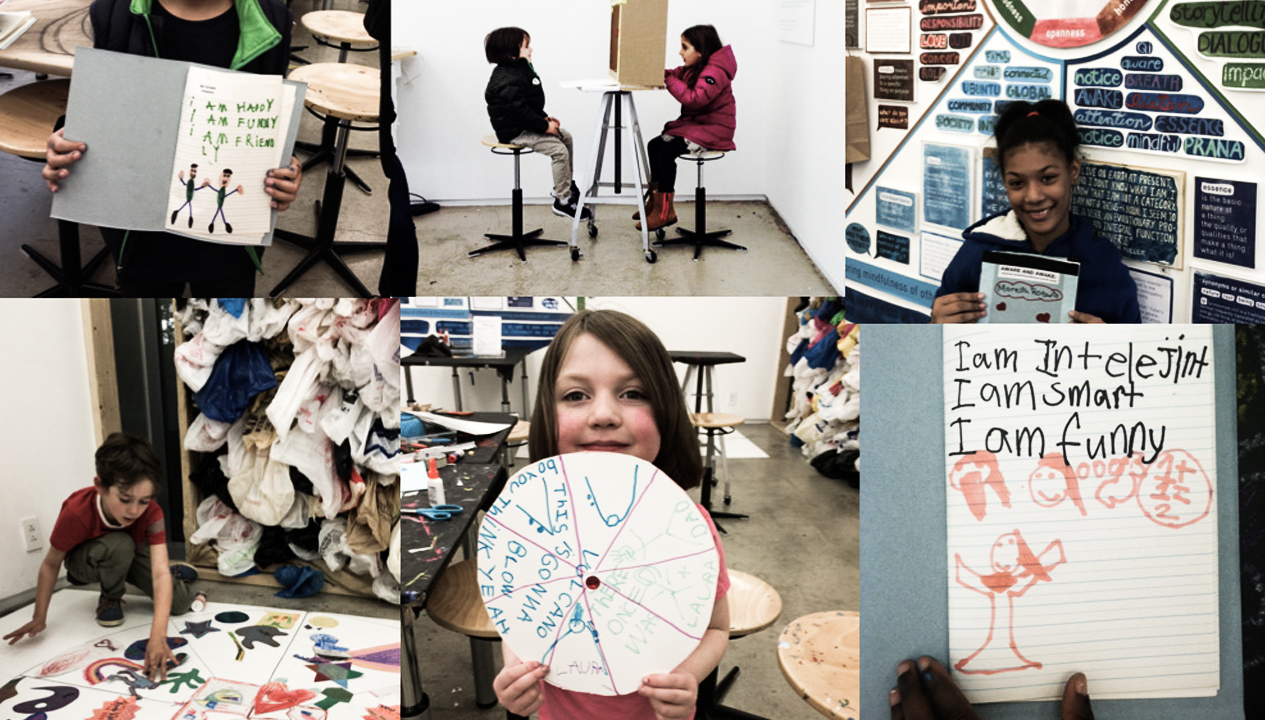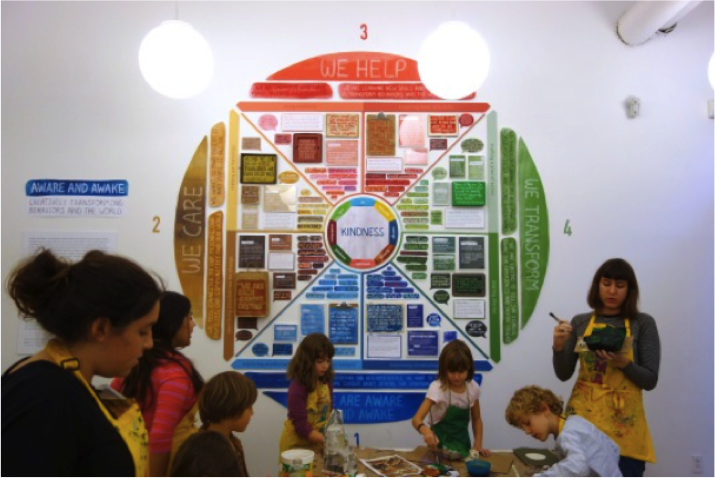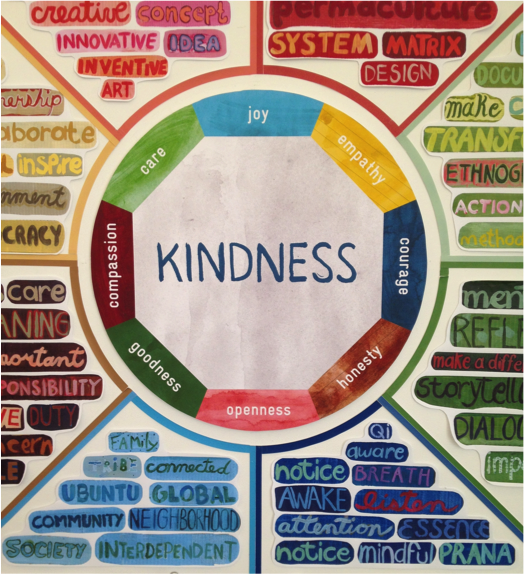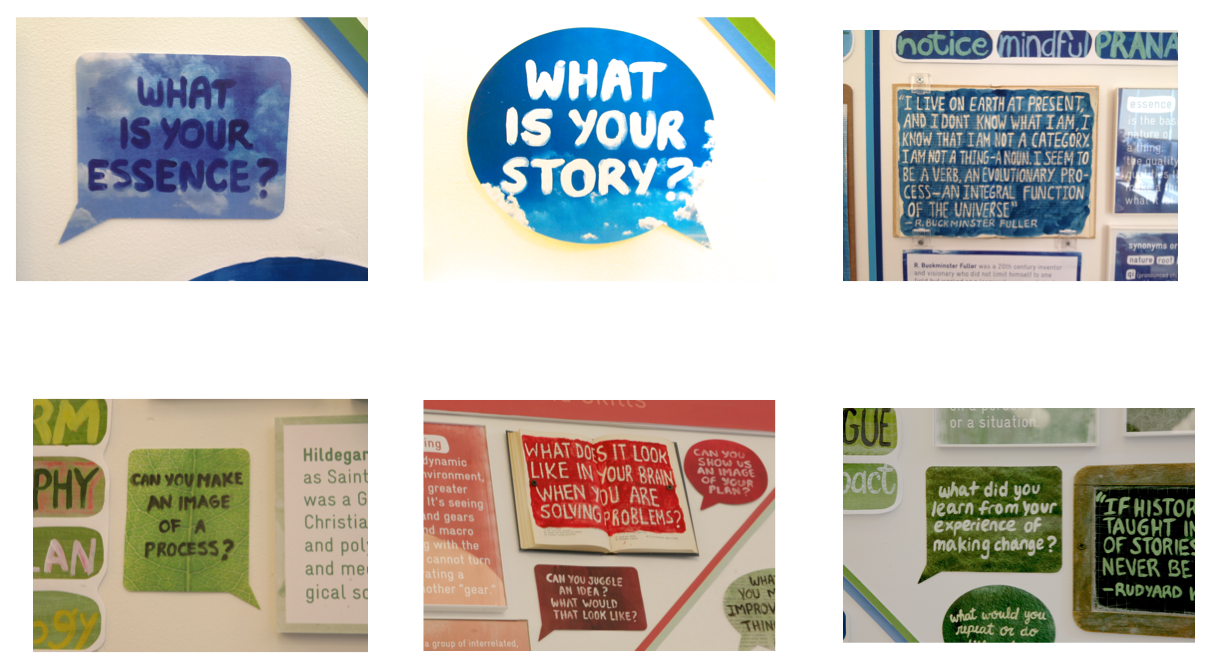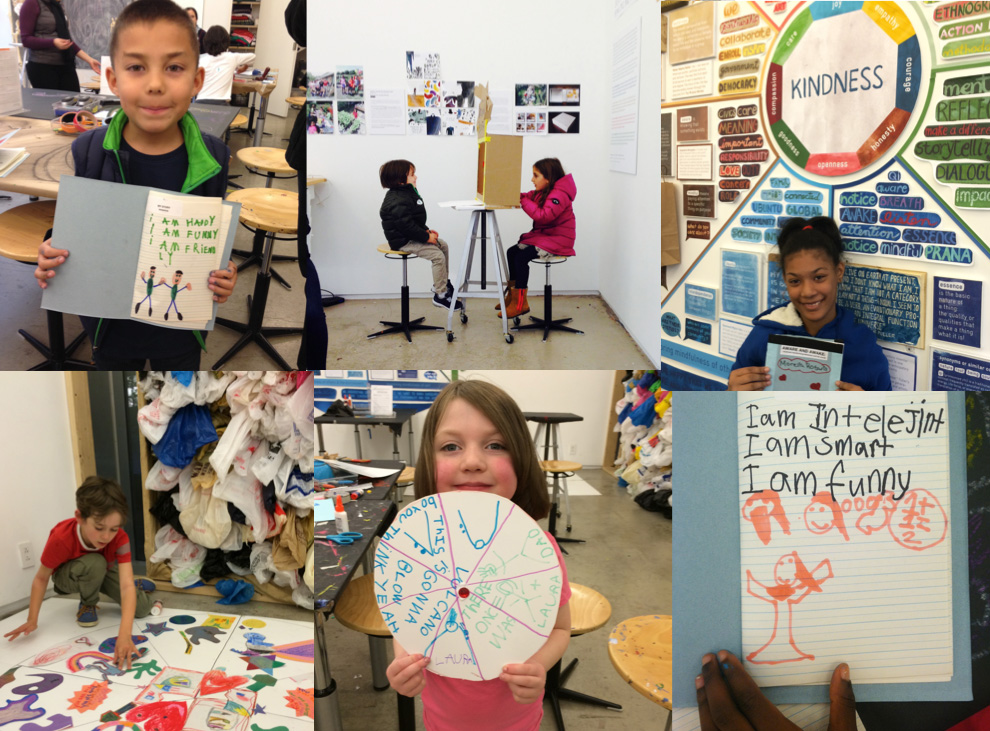Alumna, Gala Narezo’s (Photography and Imaging ’01) exhibit Aware and Awake: Creatively Transforming Behaviors and the World! Bringing Mindfulness and Social Engagement to K-12 Education can be seen at the Children’s Museum of the Arts in New York until January 11, 2015. In the following blog post, Gala talks about the exhibit and how it was inspired by her Graduate students at Pratt Institute and their desire to have been exposed to social impact design principles at a much earlier stage in their education.
Currently Gala works as a multidisciplinary art director. Her recent projects have included social awareness campaigns, urban interventions and curricula development for topics as varied as immigration, sustainability and mindful education.
“I wish I had known about this field when I was younger!”
 For years graduate students have complained to me that they wished they had learned about social impact design when they were younger. My current exhibit AWARE AND AWAKE: creatively transforming behaviors and the world! at the Children’s Museum of the Arts in New York is my response to their request. Awake and Aware is an interactive exhibit created to promote and encourage mindful change-making through creativity and the arts. This visual curriculum presents a layered process that guides and supports children through an exploration of interdependence and problem solving, empowering them to become agents of change in their communities. Children can engage in this system over a period of weeks or months investigating the many themes and pursuing the projects and prompts included within the mandala. The curriculum can be adapted for any age group. We have been offering workshops for families and children at the museum since September and we will continue working with children in public and private schools in the New Year.
For years graduate students have complained to me that they wished they had learned about social impact design when they were younger. My current exhibit AWARE AND AWAKE: creatively transforming behaviors and the world! at the Children’s Museum of the Arts in New York is my response to their request. Awake and Aware is an interactive exhibit created to promote and encourage mindful change-making through creativity and the arts. This visual curriculum presents a layered process that guides and supports children through an exploration of interdependence and problem solving, empowering them to become agents of change in their communities. Children can engage in this system over a period of weeks or months investigating the many themes and pursuing the projects and prompts included within the mandala. The curriculum can be adapted for any age group. We have been offering workshops for families and children at the museum since September and we will continue working with children in public and private schools in the New Year.
Over the last twelve years my social engagement practice and my mindfulness practice have become inseparable. As an educator who teaches both social impact design and mindfulness, I have become committed to creating curricula that offers these traditions as inextricably connected parts of a whole. There are many successful models and toolkits to use when working on impact projects but often the students and those involved question their personal role and connection to the work and the process. This is where the mindfulness piece comes in. Mindfulness tools help us gather our attention to focus on a specific thing, emotion, topic or situation. This capacity to focus gives us an ability to understand our motives and intentions more clearly. For those of us who did not grow up in an environment that taught us these skills, it can still be challenging to focus, to be present and to stay connected.
This frustration expressed by my graduate students at Pratt Institute made me curious about what they were really longing for and how early we might be able to introduce the ideas, concepts, tools and methods taught in this field to younger students, even children. Over the last fews years, these questions have driven my work. I have researched and explored the many toolkits and methodologies used in the cross sections of design thinking, education, arts, transformational activism and mindfulness looking for a way to address this request and present the desired information to a younger generation of potential change makers. My focus is on these potential change makers, students in K-12, because as we well know, the world will be theirs soon. In order to set them up for optimum success, we have to teach them the necessary skills and tools while exposing them to the 21st century challenges they will soon be confronting. If they are able to cultivate mindfulness, develop synergistic thinking and problem solving skills while experiencing their potential to transform their communities we will be helping to prepare a generation of children with voice, agency and vision.
Why should we start with K-12 education? We have probably all felt overwhelmed and impotent, if not sad and frightened, about the state of the world at some recent point. As the parent of an eight year old, I have to think of ways to answer my daughter’s questions about unfairness and injustice on a regular basis. Her questions keep me honest and on my toes. I do not want to teach her a sense of futility or that someone else will solve her problems. I want her to know how to think about the problems we face critically, understand how the parts can easily be seen as a system that needs to be redesigned and then give her the skills to go to work creating new better, more sustainable and humane answers to our most intractable problems. This may not happen overnight, but this way she will have the opportunity to grow her toolkit and mature into her role as a 21st century change maker.
Reasons to teach mindfulness to children are many and very powerfully stated by The American Mindfulness Research Associates in the quote below.
“Young children’s capacity to self-regulate attention and emotion contributes to their scholastic success and predicts their academic attainment. There is a need for programs that enhance children’s self-regulation skills, and mindfulness-based interventions that promote sustained attention, self-monitoring, and cognitive flexibility…”- The American Mindfulness Research Association
The truth is that most of us could use some help regulating our attention and emotions at all ages.
If you have questions, comments or are interested in learning more about the visual curriculum and/or collaborating with us please don’t hesitate to contact me at galanarezo@mac.com
Awake and Aware was created by Gala Narezo and Chantal Fischzang of mindful+ an initiative that links mindfulness to all endeavors through art and education.
